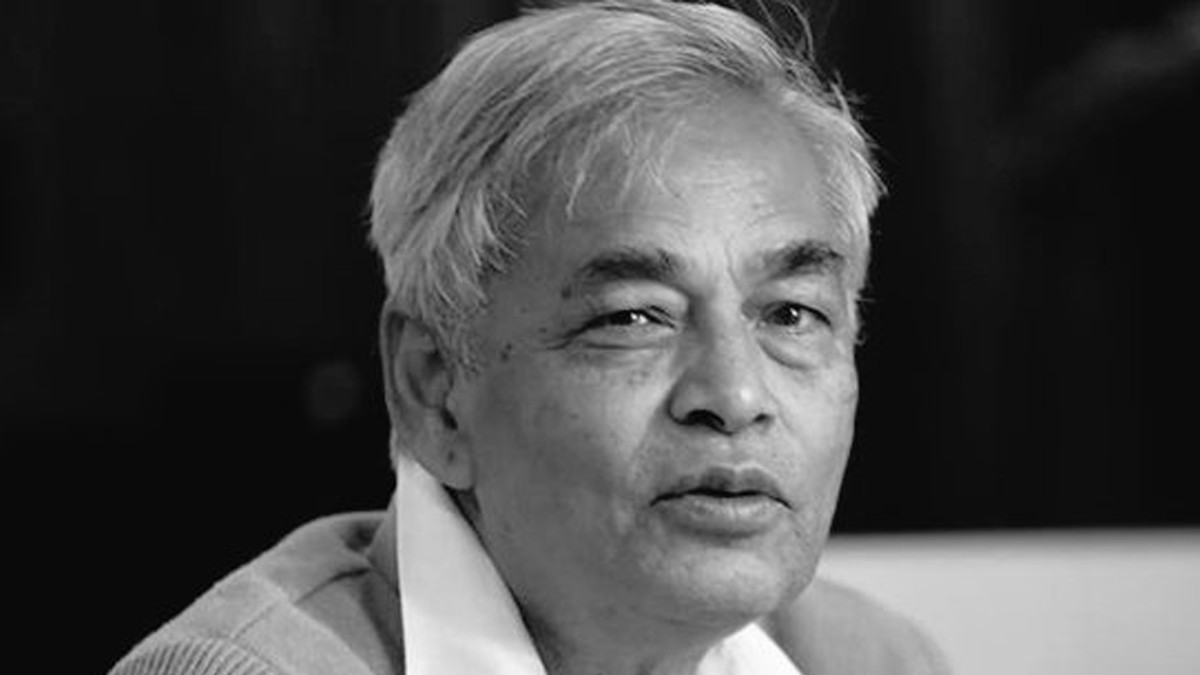 The scene in Sri Lanka when an angry crowd surrounded the house of the president.File Photo
The scene in Sri Lanka when an angry crowd surrounded the house of the president.File Photo
WASHINGTON, DC – In a win for democracy, mass protests in Sri Lanka recently led to the resignation of President Gotabaya Rajapaksa and Prime Minister Mahinda Rajapaksa. A strongman who won popularity for overseeing the end of Sri Lanka’s civil war in 2009 (while his older brother, Mahinda, was president), Gotabaya was elected in November 2019 and promised to safeguard national security and deliver prosperity. He failed miserably.
Despite allegations of corruption, war crimes, and attacks on journalists, the Rajapaksa government had a powerful mandate, which was reinforced nine months later when the brothers’ party, Sri Lanka Podujana Peramuna (the Sri Lanka People’s Front), won a two-thirds majority in Parliament. Yet during his short tenure, the Rajapaksas drove the country into bankruptcy, food insecurity, and spiraling inflation.
Gotabaya announced his candidacy just days after the 2019 Easter Sunday bombings, promising a strong response to terrorism. In the months that followed, newspapers’ and radio stations’ frenzied coverage heightened people’s fear of Muslims (who comprise 10% of the population), and attacks on them increased. Gotabaya capitalized on this environment, portraying himself as a defender of the Sinhala-Buddhist majority who would transform Sri Lanka into a Singapore of the Indian Ocean. The clergy, media, military, political elites, and local business tycoons all adopted the same rhetoric, tying their fortunes to his.
The Buddhist clergy, for example, continuously reaffirmed their trust in Gotabaya throughout his presidency. In return, he established a Buddhist Advisory Council of notable monks to help guide his policy decisions. Even in January of this year, as families began rationing food, and as the central bank sold its remaining gold reserves to pay back an international bond, the Buddhist establishment spoke up for Gotabaya, arguing that he was still the only leader who could save the country.
By March, hospitals were reporting shortages of essential medicines, and two elderly men died while queuing for gasoline. Unable to pay for fuel to produce electricity, the government instituted rolling blackouts that culminated in 13-hour power cuts at the height of a suffocating heat wave. That was the final straw. Protesters stormed the streets and demanded the Rajapaksas’ resignations.
The political class responded by playing musical chairs within the Cabinet of Ministers, while demonstrators occupied the area surrounding the Presidential Secretariat. The space that Rajapaksa had set aside as an “agitation area” – a move heavily criticized for limiting people’s freedom of assembly – was renamed “GotaGoGama” (“Gota Go Village”). The GGG became the home of the Aragalaya (struggle) against the government, which has now raided the site and arrested protest leaders.
The Aragalaya has been unusual in that it welcomed Sri Lankans from all ethnic backgrounds. In April, protesters outside the Presidential Secretariat included activists from the Muslim community – a direct rejection of the chauvinist sentiment Gotabaya had stoked. Demonstrators also cooked a mixture of water and rice (kanji) to commemorate Tamil civilians who died during the last stages of the war, when indiscriminate shelling made it impossible for them to secure other food.
The Aragalaya thus became a place where people lived out the alternative to the Rajapaksa brand of politics. The protesters celebrated unity amid diversity, demonstrating that hope comes not from leaders but from the power of people.
But does this solidarity reflect a mere marriage of convenience? Just two and a half years ago, many of the current anti-government protesters endorsed the Rajapaksas’ brand of majoritarian politics. Today, they complain that Parliament is full of cheats and liars. Yet it is they who voted for the charlatans in free and fair elections.
The Rajapaksas were given a mandate despite their well-known record of corruption, authoritarianism, and violence. The protests began not when the family stole public funds or trampled on minority rights, but when Sinhalese were called “extremists and terrorists” just for demanding food.
The institutions that underwrote Gotabaya’s power have now lost credibility. Businesses and others who aligned with the Rajapaksas are being shamed on social media, and any elite Buddhist clergy who dare to show up at protests are lambasted. The military and the police, once praised for their service, are now seen as vehicles of state repression, and major media organizations have been condemned for whipping up anti-minority sentiment.
The question now is what will fill the vacuum. Sri Lankans have a rare opportunity to build a new identity based on this struggle for dignity. After being tear-gassed and battered by the police, Sinhalese protesters have caught a glimpse of the violence and mistreatment that Tamils have suffered. After watching their businesses collapse from lack of electricity, they now have a sense of what Muslims feel when their businesses are torched by angry mobs. And after feeling the effects of sharply rising inflation, all households now recognize that plantation workers cannot live on $3 per day.
In each case, the Sinhala-Buddhist majority has been given a window onto the decades of deprivation suffered by minorities. Sinhala Buddhists are connecting with their inner Tamils and Muslims. But only by building on this shared trauma can Sri Lankans transform resentment against the Rajapaksas into a new social contract. By renegotiating our communal bonds and relationships, we can construct a new collective identity. That means rejecting majoritarianism and corruption, and embracing our shared struggle for a free and prosperous future.
Priyanka Krishnamoorthy is a former research analyst for Sri Lanka’s Ministry of Finance.
Copyright: Project Syndicate, 2022.
www.project-syndicate.org

 Priyanka Krishnamoorthy
Priyanka Krishnamoorthy








